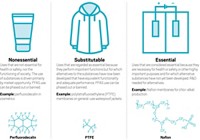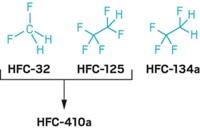Advertisement
Grab your lab coat. Let's get started
Welcome!
Welcome!
Create an account below to get 6 C&EN articles per month, receive newsletters and more - all free.
It seems this is your first time logging in online. Please enter the following information to continue.
As an ACS member you automatically get access to this site. All we need is few more details to create your reading experience.
Not you? Sign in with a different account.
Not you? Sign in with a different account.
ERROR 1
ERROR 1
ERROR 2
ERROR 2
ERROR 2
ERROR 2
ERROR 2
Password and Confirm password must match.
If you have an ACS member number, please enter it here so we can link this account to your membership. (optional)
ERROR 2
ACS values your privacy. By submitting your information, you are gaining access to C&EN and subscribing to our weekly newsletter. We use the information you provide to make your reading experience better, and we will never sell your data to third party members.
Letters to the editor
Fiber optics and gas chromatography
As usual, Mitch Jacoby has written an article, “A Way Forward for Optical Fibers” (C&EN, March 16, 2020, page 28), that is worthy of study. Analytical chemists should also take note. Jacoby points out that after Charles K. Kao’s pioneering work with optical fibers, commercialization largely by telecom companies took off in the 1980s. Much before that time, a meeting took place in East Lansing, Michigan, in 1957 when Marcel Golay introduced the idea of open-tubular capillary gas chromatography columns.
The pioneering work of Raymond Dandeneau and E. H. Zerenner (J. High Resolut. Chromatogr. Chromatogr. Commun. 1979, DOI: 10.1002/jhrc.1240020617) at Hewlett-Packard led to the fused silica wall-coated open-tubular (WCOT) gas chromatographic column that revolutionized the practice of gas chromatography. A nice look at how WCOT GC columns evolved using fused silica—the same as that used in fiber-optic communications—can be found in Robert Grob and Eugene Barry’s classic text Modern Practice of Gas Chromatography, fourth edition.
Paul R. Loconto
Okemos, Michigan
Utility poles
The Stockholm Convention evaluation of pentachlorophenol noted some of the chemical alternatives described in C&EN’s recent reporting on utility poles (April 13, 2020, page 22). However, the treaty’s expert group also described some important nonchemical alternatives that C&EN did not consider. These include burying lines or using utility poles made of steel, concrete, fiberglass composite, or resistant hardwood. The evaluation found that many countries switched to these alternative pest-resistant materials decades ago. Initial costs were higher, but overall they were cost competitive because of longer life spans and reduced maintenance costs. Most importantly, these alternative materials eliminate wood treatment with toxic chemicals that endanger workers, pollute the environment, and require hazardous waste treatment. The search for a pentachlorophenol alternative should be broader than another toxic chemical.
Joseph DiGangi
Berkeley, California





Join the conversation
Contact the reporter
Submit a Letter to the Editor for publication
Engage with us on Twitter